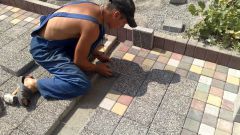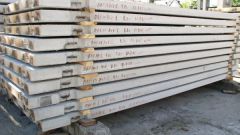Preliminary work
The first stage is the marking of territory: specialists determine where the asphalt will be put, where to put the curbs, and where to do the collection and runoff of rainwater. They also determine the composition of asphalt pavement, the thickness of the gravel base. The thickness of 10-15 cm is sufficient on-site, where most of the moving pedestrians and do not often passing motor vehicle. If settling industrial area, gas station, road section, i.e. the expected regular traffic, including trucks required gravel base 25 to 35 cm and two to three layers of asphalt.
Crushed stone select the suitable fractions. The fraction represents the size of the individual stone/grain, which is the maximum admissible in each particular case. If the desired thickness of the broken stone base of 10-15 cm, then apply the gravel fraction 20-40 cm If the base should be wider and more reliable, it is placed in two or three layers. When laying a bottom layer of base gravel shall have a fraction of 40-70 cm, this layer in a situation of lifting of ground waters is responsible for water drainage. The second layer provides uniform distribution of load on the ground, for him to take the gravel in the 20-40 cm Gravel fraction 5-20 cm is used for the third layer. Each layer is compacted by the roller 5-6 times. The slope of the site (5-10 mm on 1 meter) is in the direction where you plan to install rainwater harvesting.
The installation of curbs, holding rain water drainage, installation of manholes, construction and repair of drainage and manholes are carried out before laying the asphalt.
Paving
To lay asphalt is recommended in the absence of rain and when the air temperature is not less than 10 ° C, the mixture is not cooled. If the styling for some reason is in the winter, pre-installed on-site must take "iron" — a special machine which will dry and heat the ground.
Dump trucks delivered to site ready mix. The pavers distribute its territory, and rollers, rammers and vibrating plate compacted.
The asphalt should be laid so to be in with the surrounding surface at the same level. Its thickness depends on the planned operating conditions. For example, in adjoining areas of residential high-rises appropriate layer of asphalt approximately 4-5 cm If you plan an intensive exploitation of the territory, the movement of trucks, etc., it is necessary to lay asphalt in two layers — coarse and fine-grained asphalt concrete, each layer at 4-5 cm in Order to achieve the best coating strength, it is possible to stack the third layer.
To ensure the adhesion of the lower layer of asphalt from the top, the old and the new layer, apply a binder — bitumen. He poured on the laid layer of asphalt before laying a new one.
Smooth the coating with special machines — road rollers and compactors. Rollers weighing 6-10 tons or more used for compaction of base and asphalt pavement, which is designed for large loads. Rollers weighing 2-4 tons are used for compaction of asphalt, designed for moderate loads. In remote places, used plate compactors and rammers. Below the seal was of higher quality, the base hydrate with a street-sweeper.


